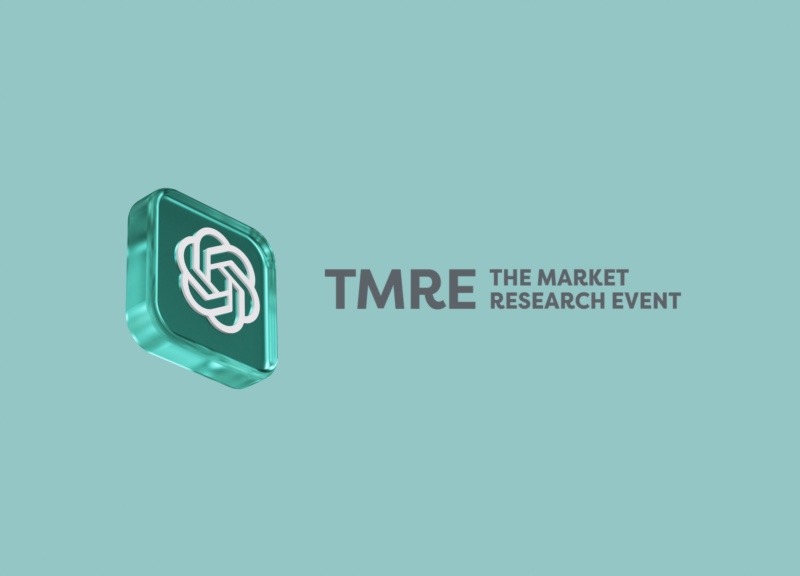There’s no getting around it: B2B tech research is hard. Especially when the technology landscape is constantly shifting right under your feet. Understanding complex technical material is hard. Writing the discussion guide with the right, relevant prompts is hard. Having deeply technical conversations with experts who seem to speak another language (often of the programming variety) is hard. Writing reports that translate tech-talk into actionable strategic business insight is hard.
Category: Technology
Brands with Personality
When is water more than just water? Ask the billion-dollar beverage brand Liquid Death. Between 2022 and 2023, Liquid Death’s retail sales grew 100% from $110 million to $263 million. The brand’s valuation is now double what it was worth in 2022. This warp-speed trajectory is particularly remarkable when you consider what Liquid Death sells: water.
Confronting Change
There’s no question the data technology industry has experienced dramatic changes over the past decade, driven largely by the emergence of the cloud. Anticipating the need to adapt to this new reality, a steadfast leader in the data space began searching for a research partner who could help them better understand the dynamics of its evolving B2B customer base, and the best way to respond.
Beyond research expertise, this partner needed to speak the highly technical language of the respondents they were talking to with authority and authenticity. With in-the-trenches experience as programmers, systems analysts, and software engineers, Thinkpiece’s technology research team fit the bill. Brought in to moderate our first group over seven years ago, we’ve been partnering with this client on multiple projects covering a broad range of mission-critical topics ever since.
Asking the Right Questions
Our technology research team was able to find respondents with the relevant level of technical expertise for each study and jump in head-first not just to moderate, but to conduct peer-to-peer conversations with respondents — many of whom were developers. By asking the right questions and steering the discussion in a productive direction, we were able to equip our direct client with the reports they needed to make a compelling case for change to internal stakeholders.
Our technical expertise also infused the research with a level of credibility, which in turn helped our direct client and his team capture the confidence of their stakeholders. Reassured that we understand the technology as well as the human dynamics, our direct client trusts our work and insights.
“Thinkpiece has the rare trifecta of what we look for in a research partner,” says the company’s Director of B2B Market Insights, who has worked with the Thinkpiece team since the first project over seven years ago. “They have their feet in each world: research, technology, and B2B — plus they know how to present their findings in a visually compelling way.”
Actionable Insight
Over the course of our multi-year research partnership, we’ve helped arm the client with tools they continue to employ to make informed decisions and move forward. Working closely with our direct client, we built on the research to develop robust audience personas that revealed the real motivations driving their customer base, as well as the differences between their various audience segments and roles. This insight helped the client shift toward more tailored and targeted messaging.
The client continues to use Thinkpiece reports and audience personas to train hundreds of salespeople to more effectively capture opportunities in emerging and adjacent technology spaces, most recently including AI. The research has additionally been shared with key strategic partners, including creative and marketing agencies, to guide them in better positioning the company.
“The work we’ve done with Thinkpiece goes beyond the typical customer journey,” explains the Director of B2B Market Insights. “We’ve used their insights and reports to come up with new decision path frameworks, to learn and grow new muscles.”
Knowing Which Way to Pivot
The insight Thinkpiece and the client gleaned over seven years of collaborative research has been instrumental in helping the company pivot and adapt to an increasingly cloud-dominant technology climate. The research we’ve done with the client has also played a role in helping align the company’s marketing, sales, and business development teams in a shared understanding of who their customers really are, what’s most important to them, and how to break through to them.
“We’ve come to trust Thinkpiece as an extension of our team,” says the Director of B2B Market Insights. “The work they’ve done has helped equip us to have those intellectually honest and often sensitive conversations about our need to do things differently and where we need to go as a company. We bring in Thinkpiece for our biggest, most strategic questions we’re tasked with answering, and plan to keep doing so.”
Learn more about Thinkpiece’s technology research approach here.
9 Tips for Using AI Safely in Market Research
There’s been plenty of hype around Artificial Intelligence (AI) and how it’s going to transform our world — including the world of market research. What’s lacking is practical guidance for using AI in our daily work as researchers. For the next series of Thinkpiece blog posts, we’re focusing on less hype-ful and more helpful AI insight.
For the first of this series, we’re sharing our top tips for using AI safely. True, AI offers the potential to help make research more efficient and effective. But AI technology also comes with a host of potential risks, particularly when it comes to data protection and privacy. After all, AI apps are designed to collect as much information — including sensitive info — as possible to keep learning and becoming “smarter.”
Before you invest in that shiny new AI app or tool, here are nine basic safety practices to keep your, your clients’, and your respondents’ data secure and protected.
1. Choose Your AI Apps Wisely
Before you start using any AI app or tool, take some time to research the company behind it. You’ll want to make sure the developer is legitimate, offers good customer support, and has a solid reputation particularly around security.
Avoid fly-by-night and sketchy apps, and do some digging into the tools you’re considering. Check out the company’s portfolio to see what they’ve done before, and the quality of those products or services — keeping a lookout for any bad press or reviews. Make sure the company is well versed in the latest AI and machine learning frameworks, and is clearly an expert in the field. Last but not least, scrutinize their commitment to security (see tip number 3).
2. Don’t Overshare
Assume that any data you share with an AI app will be used to improve its machine learning — and is at the mercy of the app developer. Which means you should also assume that this data is vulnerable to breaches.
To that end, avoid sharing any personal, confidential, or sensitive data — especially your clients’ or respondents’ info. For example, any proprietary client information, such as a new product that’s being held under wraps, should definitely not be shared with any AI app or tool. A general rule of thumb we follow: if you don’t want it blasted on social media, don’t share it with an AI app. And if you come across AI-generated content that requests sensitive information, run the other way.
You might also want to invest in additional security tools designed to prevent oversharing of confidential and sensitive data. LLM Shield, for instance, prevents language learning machines (LLMs) like ChatGPT from leaking your clients’ or respondents’ personal or private information.
3. Peruse the Privacy Policy
Reading the fine print may be a pain, but it’s important to know what you’re signing up for. So be sure to peruse the privacy policy, terms, and conditions for any AI app you’re thinking about using. This will let you know how the app plans to collect, store, protect, and use any data you share with it.
As previously mentioned, most apps use the data you share to make it “smarter.” But the app’s developers may also be exploiting data for other purposes, such as selling personal information to third parties who want to completely freak you out with personalized ads. The app’s privacy policies should give you confidence that the developers won’t do anything dubious with your data and are taking thorough measures to protect your info from hackers.
4. Customize Your Security Settings
After carefully reviewing the app’s privacy policy and deciding you’re comfortable with it, don’t stop there. Go into the app’s privacy and security controls and change any settings to meet your preferences.
For example, the app may give you the option to have data automatically erased after a certain amount of time, or you may be able to choose to delete the data yourself manually. You might also be able to review and erase search histories and clear conversations to delete anything you and the AI app might have “chatted” about.
5. Train Your Team
It’s a good idea to formalize your own security policies and practices for using AI apps and tools, as well. Guidelines can cover a wide range of topics, including how the app should be used in alignment with your or your clients’ values; complying with laws related to data privacy; identifying and addressing potential AI biases; reducing risks of exposing or mishandling sensitive data; the role of humans in ensuring AI app safety; and steps to take in the event of AI-related errors or disputes.
Train your team and anyone who will be using the AI app on these policies, practices, and guidelines to make sure they’re understood and followed.
6. Keep Up with Compliance
It’s a good idea to familiarize yourself and any other users on your team with current compliance and regulatory requirements around the use of AI. The Health Insurance Portability and Accountability Act (HIPAA), for example, enforces strict guidelines around protecting patient information and privacy which might easily be violated using AI. If you’re conducting research in Europe, you’ll want to be aware of any potential General Data Protection Regulation (GDPR) issues when using AI tools.
Compliance and regulations around the use of AI are ever evolving, so it’s important to stay on top of these changes to protect yourself as well as your clients and respondents.
7. Follow Good IT Security Practices
The growing prevalence of AI makes robust IT security protocols and hyper-vigilance even more critical, now that the area of attack is much larger. Keep employing the usual security best practices, such as creating strong passwords for all apps and websites, making sure all your software is up to date with the latest versions, and employing reputable anti-malware and anti-virus software.
This last point is especially important since it’s now possible to create malware that observes what you enter into an LLM like ChatGPT and then sends that information to a malicious actor for the purpose of stealing sensitive data. It’s also possible to use prompts engineered to “hypnotize” or trick an AI tool into doing things it normally wouldn’t, such as compromising the user’s data or producing incorrect or malicious responses.
These hypnotized AI apps can be used in phishing attacks to steal data from a user who thinks they’re interacting with a reputable source. Following good IT security practices will help protect you against this new crop of AI-enabled hacking.
8. Remember: AI Isn’t Perfect
Far from it, in fact. AI algorithms are subject to bias, which can lead to inaccurate, unfair, and even offensive results — all of which we definitely want to avoid in market research. Case in point: you might have read about the New York-based law firm that used ChatGPT for legal research and submitted a filing that referenced six completely fabricated legal cases, complete with bogus decisions, quotes, and internal citations — putting the firm in legal jeopardy as a result.
Which is why it’s critical that you don’t rely or make decisions based on AI alone. Have an actual human review, vet, and confirm any content or results generated by an AI app — paying close attention to potential inaccuracies, prejudices, or outright lies.
9. Just Keep Learning
One lesson we can glean from AI: the more we learn, the smarter we get. If you’re interested in leveraging AI for market research, we recommend learning as much as you can about the subject before you invest in and start using any AI tools or apps.
One good source of knowledge is Amazon, which recently launched its “AI Ready” initiative with free courses that teach you how to use generative AI (GenAI) to create text, images, and other media. Think ChatGPT and DALL-E. We just completed Amazon’s Generative AI Learning Plan for Decision Makers course, and recommend it for anyone interested in understanding more about using GenAI in their organizations.
You can also schedule a no-cost tutorial session with our in-house AI expert and Director of Technology Research, John Dibling, and download our free resource guides including “Understanding AI & Why It Matters for Market Research” and “8 Tips for Using ChatGPT in Market Research” here.
While one of the aims of AI is to simplify our lives, in reality it’s added a lot of complexity. And that complexity is constantly changing. We’re here to help you safely leverage AI as an effective, collaborative market research tool — human to human. Let us know if you have questions or are looking for more guidance.
To Get from Findings to Insights, You Need an Actual Human
With all the buzz (and, in some cases, panic) around artificial intelligence (AI), we thought it would be a worthwhile endeavor to examine the impact of AI on a subject near and dear to our hearts: qualitative market research.
As researchers, should we be warily eyeing AI with suspicion? Could AI eventually replace us carbon-based lifeforms when it comes to gathering and distilling research (once it’s done taking over the planet, of course)? While the continual evolution and emergence of AI will no doubt have a significant impact on how market research is done, we may be focusing on the wrong questions.
Instead of asking: “Will AI make us obsolete as researchers?” — let’s reframe the query. What we should be asking ourselves is, “How can we leverage AI to be even better at what we do?” In other words, rather than panicking over AI, let’s plan and prepare for it as a collaborative tool in the hands of people who know how to use it.
Findings Vs. Insights, Humans Vs. AI
Our deeply felt belief is that AI will not, should not, and cannot replace humans when it comes to qualitative market research that delivers real, meaningful value to clients. Here’s why. As a tool, AI offers tremendous potential in helping researchers uncover, gather, organize, and present research findings with greater speed and efficiency. But it takes a human with a specific set of expertise, an understanding of why people behave the way they do, and — perhaps most importantly — empathy to translate those findings into actionable insight.
Before we go any further, let’s take a moment to clarify the difference between findings and insight — because, while related, they are not one in the same. Findings refer to the facts or cold, hard data that are discovered during the course of the research. A finding could be shared by a respondent you’re interviewing one-on-one, voiced by a participant in a focus group, or observed by the researcher. “This respondent preferred concept A over concept B,” for example. That’s a finding.
Insight goes a layer deeper than a finding, to reveal an unspoken truth, belief, or reality supported by the facts or data. While findings focus on the “what,” insights illuminate the “why,” allowing us to better understand what motivates that hypothetical respondent to prefer concept A over concept B. This information is invaluable in helping clients make decisions and move forward with greater confidence.
As researchers we need to get past the findings to explore those insights that provide true value and direction our clients can act on. This process takes time and imagination, which is why we need humans to lead qualitative research, no matter how advanced AI technology gets. More precisely, we need humans with a particular set of skills, talents, and experiences. Let’s dive into that a bit more.
Speaking the Language
Ideally, the human leading the qual market research should bring first-hand experience relevant to the subject at hand — something AI simply can’t provide. Yes, AI can scrape the vast universe of data and “learn” how to mimic an industry-specific expert, but there’s no substitute for in-the-trenches, hands-on experience.
We’ve found this to be particularly true with the research projects we’re involved with, which typically center around complex challenges and questions in the fields of healthcare, technology, and finance. Because our researchers started in these very same fields (as software engineers, clinicians, and fintech brainiacs), they don’t have to “learn” the language of the industries they’re researching; they’re already fluent.
This industry-insider advantage also means our researchers know how to connect with the respondents they’re interviewing (often other clinicians and technologists) in an authentic, peer-to-peer manner. This level of trust and understanding leads to better questions, more meaningful conversations, more relevant findings, and yes, deeper insights.
Understanding Our Fellow Humans
There’s one other area where humans excel and AI flounders: understanding people — the way we think and feel, the reasons we make decisions and have certain preferences, the motivation behind our behaviors. As much as AI can sound like a human, it simple doesn’t know what it means to be human — the desires, fears, wants, and needs that drive us. And thus, it lacks the capacity for understanding human behavior that is so essential to revealing truly impactful insight.
People — being people — already have a basic understanding of what it means to be human. But when it comes to turning findings into insights, it helps to have a researcher who is fluent in sociology and human dynamics. This added layer of expertise enables the researcher to delve beyond industry-specific language and pick up on what is often unarticulated. So for example, even if a respondent may not precisely know why they selected concept A over concept B, a researcher with a sociology or human behavior background can often uncover the motivating factors and share this critical insight with the client.
The Element of Empathy
Perhaps the most important quality unique to humans, and absent in AI, is empathy. In the world of qualitative market research, being able to empathize is key to making the leap from findings to insights. That’s where researchers who come from the industries they’re researching have another advantage.
A researcher who is a former nurse has sat by the patient’s bed and walked the hospital halls. As such, she has the capacity to empathize not only with patients and their families, but with the clinicians who care for them and the companies innovating the drugs and devices to treat them. A researcher who burned copious amounts of midnight oil as a software engineer in a previous life will be able to empathize with CIOs, IT staff, and developers as well as the people using their technologies and products. What’s more, researchers with industry experience will have empathy for the client who seeks answers to challenging problems and is faced with difficult decisions that have a direct impact on the success of their company.
Applying Insights to Brands
If you’ve seen this horrifying AI-generated ad for a pizza delivery service, you’re familiar with the limitations (more like aberrations) of artificial intelligence when it comes to branding. And while AI is getting smarter with every passing day (hey, it can even recreate human-like hands now), it’s still a long way from winning any Clio awards.
For that, you still need creative, brilliant, brand-savvy humans. In the qual market research world, researcher may tend to overlook branding — being so wrapped up in the findings and insights part of it. But we would argue that branding is the natural progression of market research; that’s where the insight ends up getting implemented in messaging, concepts, creative, and campaigns. You need that human researcher who is able to not only reveal and articulate the insight, but demonstrate how that insight can be used to build resonant, effective brands that connect with — you guessed it — real, live people.
Collaborating with AI
The debate around findings vs. insights is a fascinating one. But at the end of the day, for researchers it’s really all about getting results our clients can act on. Findings without insights are just facts; interesting, yes, but so what? Insights without implementation are just reports that sit on a shelf in someone’s office, gathering dust.
As expert and empathetic researchers, we have a responsibility to our clients to deliver outcomes they can act on. That involves analyzing, collecting, and presenting the data and insights with a clear strategic direction. And that’s where AI can help. There are a wealth of AI tools and technology — with more immerging daily — that researchers can leverage to be more efficient, productive, wide-reaching, and accurate in how and where we collect data.
AI tools can help us identify and locate hard-to-find respondents more quickly. They can assist us in putting together effective screeners and simplify the process of developing discussion guides so we can focus our time and talents elsewhere. They can help us scale our reach, enabling more conversations with more target audiences.
AI can be our tireless intern, working without the need for coffee or bathroom breaks to create and cull through focus group transcripts, survey responses, social media posts, reviews, and more. AI tools can help us identify trends and patterns that might take the human eye much, much longer to see. They can collect and synthesize data across a wide range of sources in a way that makes it easier for us to draw out those insights. And they can help us create reports that equip clients with clear answers and strategic recommendations.
What they can’t do is replace us — us being human researchers who bring to the table years of lived experience, an in-depth understanding of human behavior and dynamics, the know-how to pull insights from findings and apply those to brands, and above all else, empathy.
AI is here to stay, and we must come to terms with it in market research. But this can be a collaborative rather than adversarial partnership, one that benefits all parties involved — from the researcher to the respondents to the client to their customers.
We’d love to talk more about findings vs. insights and the role of AI in MR with you. Reach out with any questions or thoughts.
Thinkpiece to Chair AI-Focused Panel Discussion at The Market Research Event (TMRE)
Chicago, IL, October 5, 2023 — Thinkpiece, a woman-owned qualitative market research firm specializing in technology, healthcare, and financial industries, will be chairing the “Game-Changers: AI/Tech Spotlight” panel discussion at The Market Research Event (TMRE) October 23-25, 2023, in Denver, Co.
Featuring multiple market research leaders, the panel discussion will explore today’s most relevant and pressing topics related to the impact of Artificial Intelligence (AI) on market research. Subjects to be covered include the perceptions around the use of ChatGPT, the rise of collecting and analyzing public data to understand consumer behaviors, the availability of new AI models for research, and leveraging AI to drive efficiencies.
The panel discussion will be moderated by Thinkpiece COO, Technology and Finance Lead, John Dibling, and will be held at TMRE on both Monday, October 23 and Tuesday, October 24, starting at 10:45am.
John Dibling plans to call on his AI expertise as he helps guide the discussion with his colleagues and fellow thought-leaders. “Artificial intelligence has long fascinated me as an emerging transformative force, which is why I pursued an emphasis in AI decades ago when I earned my degree in computer science,” he says. “I’m looking forward to being part of this conversation around the implications of AI on our industry. It’s a discussion everyone in market research should be having.”
Thinkpiece’s technology team has additionally written a series of books focused on AI in market research. The first in the series, titled Understanding AI & Why It Matters for Market Research, is available at thinkpiece.com/ai.
“Thinkpiece is excited to attend TMRE 2023, exchange insights with our industry peers, and explore the topics that are having the greatest impact on market research, such as AI,” says Thinkpiece Chief Executive Officer, Bonnie Dibling. “Along with John and myself, our technology, healthcare, and finance team will be on hand to answer questions and discuss the direction market research is heading with attendees.”
In the spirit of the AI thread at TMRE, the Thinkpiece team will be serving a custom cocktail created by ChatGPT at their booth number 203. “We’re calling it Liquid Insight, and it actually turned out delicious,” says Bonnie. “We’ll be revealing the recipe at the show, so we invite attendees to stop by our booth to try it while we talk all things insight.”
TMRE will be held at the Gaylord Rockies Event & Convention Center in Denver, CO, on October 23-25, 2023. For more information about TRME and the AI panel discussion, visit informaconnect.com/tmre.
To learn more about Thinkpiece and their unique approach to insight as market researchers who come from the technology, healthcare, and finance industry they serve, visit Thinkpiece.com.
* * *
About Thinkpiece
Thinkpiece is a woman-owned qualitative market research firm that does things differently. We took professionals working inside the technology, healthcare, and financial industries we serve and trained them to be great researchers with the skills to reveal those hidden gems of insight. As software engineers, clinicians, advertising executives, and sociologists, we speak our clients’ complex language, get up to speed faster, hit the ground running, and dig deeper for the “why” behind the “what.” Using research as a strategic tool, we help our clients answer difficult questions and move forward. Learn more at thinkpiece.com.
Cloud Choices
Technology.
John’s 20 years of experience as a software engineer allows him to understand a project’s technical depth while building peer relationships with every client and respondent. Learn more about John’s commitment to qualitative research.
Understand.
A leading technology company wanted to understand the decision-making process for enterprise organizations evaluating cloud providers for their critical infrastructure. More specifically, they wanted to understand who makes recommendations and decisions surrounding the move.
The client had theories about this process and needed these theories confirmed or corrected. The long-term goal was for them to better understand who they needed to target when marketing their services and solutions and what may be needed or evaluated in the process.
Design.
Rather than setting out to only assess our client’s existing theories, we sought to conduct a landscape study to better understand the perspective of those working within enterprise organizations. The research was designed to allow respondents to organically build a map of the process that would, as a result, confirm or refute the existing theories.
This approach would help generate a natural view of the process without potentially altering responses.
Execute.
Letting respondents lead us through the decision-making processing encouraged more natural conversations and, as expected, shed light on who specifically recommends and/or evaluates potential cloud providers. Using our knowledge of both the technology itself and business operations, we followed respondents through recent projects, from genesis to production, while listening for significant decision makers and moments of change.
This process gradually helped the client understand the accuracy of their theories but also allowed the respondents to paint a picture without pre-established borders.
Analyze & Advise.
The research allowed us to build an influencer model with profiles of the various roles participating in and/or running the process of migrating to the cloud. We were able to identify the evolution of the cloud deployment process and show why many enterprises deliberately deploy to one cloud provider initially but later redeploy to another. However, the non-restrictive nature of our research enabled us to take this understanding one step further by building models that corresponded to unique organizational structures and purchasing / technology decisions that extended beyond cloud migration.
From more traditional, top-down organizations to grassroots companies with a less linear process, our models provided clarity, so our clients could go to market with greater confidence. This model is still applied today when making major strategic and tactical marketing decisions and has been proven accurate in many subsequent research studies with this client.








